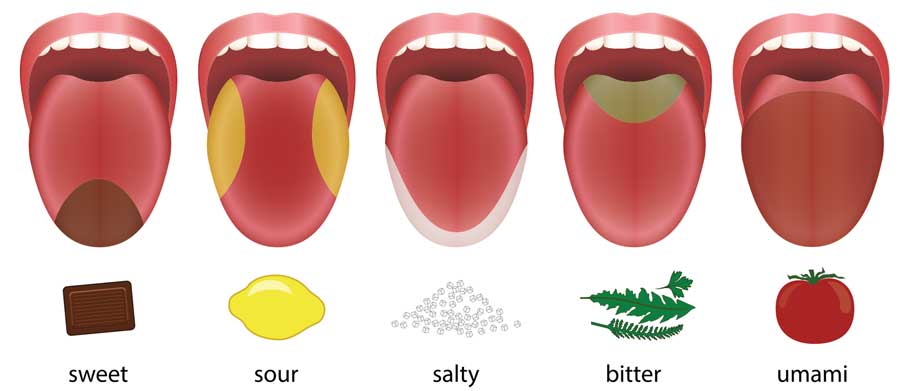Penn State Researchers Have a Taste for Sensory Science
INSIDE ACADEMIA
 The crunch of a potato chip, the burn of a chili pepper, the cool creaminess of ice cream, and the smell of bacon are examples of sensory attributes that people experience when they eat food. The flavor, taste, texture, smell, and appearance of foods elicit positive and negative reactions in consumers, leading them to like, and establish preferences for, certain foods. Preferences drive the food choices that consumers make, so determining the attributes of foods that consumers prefer is a primary objective for all food companies. Sensory science and sensory evaluation help food companies design food products that meet consumer preferences. “The reason we need to study sensory science is because fundamentally, at the end of the day, a consumer is going to buy a food product, and a food product that doesn’t taste good will not sell well,” says John Hayes, an associate professor in the department of food science at Pennsylvania State University and director of the school’s Sensory Evaluation Center. The center enables sensory scientists, flavor chemists, process engineers, and other food product development professionals to understand how aromas, ingredients, texture, and food processing techniques affect the sensory properties of foods and to create food products that sell.
The crunch of a potato chip, the burn of a chili pepper, the cool creaminess of ice cream, and the smell of bacon are examples of sensory attributes that people experience when they eat food. The flavor, taste, texture, smell, and appearance of foods elicit positive and negative reactions in consumers, leading them to like, and establish preferences for, certain foods. Preferences drive the food choices that consumers make, so determining the attributes of foods that consumers prefer is a primary objective for all food companies. Sensory science and sensory evaluation help food companies design food products that meet consumer preferences. “The reason we need to study sensory science is because fundamentally, at the end of the day, a consumer is going to buy a food product, and a food product that doesn’t taste good will not sell well,” says John Hayes, an associate professor in the department of food science at Pennsylvania State University and director of the school’s Sensory Evaluation Center. The center enables sensory scientists, flavor chemists, process engineers, and other food product development professionals to understand how aromas, ingredients, texture, and food processing techniques affect the sensory properties of foods and to create food products that sell.
“In my view, sensory science and sensory evaluation are not the same thing,” Hayes says. “Sensory evaluation traditionally can be thought of as the testing methods and tools that we use to get … human participants to evaluate food products. Sensory science is the broader field that studies not only how consumers react to products but also attempts to understand people in their own right.” Sensory science thus includes understanding the biology of how human senses work and the psychology of how humans perceive stimuli and respond to them. To conduct a sensory evaluation, Hayes and his research team utilize experimental design and analysis to determine how consumers taste, smell, touch, see, and hear various food products.
Distinguishing Between Taste and Flavor
Two of the most crucial criteria for evaluating a food product and making food decisions are taste and flavor. While consumers may use the terms ‘taste’ and ‘flavor’ interchangeably, the two terms actually have distinct meanings. “As sensory scientists, we can be kind of persnickety about terms like this,” says Alyssa Bakke, a sensory scientist at the Penn State Sensory Evaluation Center. “To the average consumer, flavor might mean a lot of different sensory attributes like sweetness or bitterness, salty, strawberry flavor, chocolate flavor, and maybe even some textural attributes some people might bring into flavor. A sensory scientist would say that taste is our five basic tastes … that are perceived to be receptors on the tongue.” The five classic gustatory perceptions detected by receptors on the tongue are bitter, salty, sour, sweet, and umami (savory). Hayes believes there may even be more than five primary tastes: “So from a scientific perspective, we can think of [taste] as being classic tastes—sweet, sour, salty, bitter, [umami]—but also probably some other tastes: the taste of fat, the taste of certain non-sweet carbohydrates, maybe metallic. So we have probably eight or nine primary tastes,” he claims.
The sense of smell, or aroma, is also involved in the comprehension of flavor; smell and taste combine to create the perception of flavor. Both smell and taste rely on chemoreceptors to transmit information about molecules in the environment to the brain. Taste occurs through specialized gustatory receptors on the tongue that are housed in taste buds; smell occurs through specific olfactory receptors in the nose. “Flavor is a combination of multiple sensory modalities. I think one of the best definitions is given by Dana Small,” says Helene Hopfer, an assistant professor in the department of food science at Penn State and a faculty member of the Sensory Evaluation Center. “Flavor is a multisensorial construct that happens when we have something in our mouth[s]. And that encompasses smelling and tasting and trigeminal receptor responses, chemesthesis and somatic sensations (so changes in texture, creaminess, etc.), and also sound.”
In fact, because there are many more olfactory receptors than there are taste receptors, aroma plays as significant a role in determining flavor as taste does, which explains why food isn’t as flavorful when nasal passages are clogged. “There might be between 350 and 400 smell receptors that every human has, and I think just the sheer abundance might lead to a larger number of different aromas compared to tastes,” Hopfer reveals. “The added complexity for olfaction or aroma is that we typically don’t have one single receptor for one single compound. What the Nobel Prize work of [Linda B.] Bach and [Richard] Axel showed was that the way that humans perceive odors is by pattern recognition. One of the latest numbers, and this is disputed, is one billion different odor stimuli that we might be able to differentiate; it’s a lot—many more than 400. So it’s not that a single receptor is responsible for a single odor; it’s that one chemical compound might be able to activate several receptors.” And according to Hayes, there is a third component of flavor: oral touch. “The third major part of flavor is the role of oral touch; so that would include both things like the texture of ice cream and the crunch of a potato chip but also the burn that you get from a chili pepper or the cooling that you get from a cough drop or from chewing gum. So flavor is really the integration in the brain of taste, smell, and oral touch,” he says.
 How Humans Make Food Choices
How Humans Make Food Choices
Taste, aroma, oral touch, and flavor are the obvious factors involved in choosing what to eat and establishing food preferences, but they are not the only elements that influence food choice. “I think when a person is determining what they want to eat, there are a lot of different things going on in [his or her] mind,” Bakke says. Many people make food choices based on convenience and accessibility while others allow their health and nutrition needs to guide their food choices. Genetics and culture play roles in food decisions, and nostalgia may also influence what consumers choose to eat. “Maybe I want to eat something that reminds me of my mom that day. I think it is a really complex question, what goes on in our minds when we’re trying to determine what we’re going to eat,” Bakke points out.
“Human behavior is a tricky, tricky thing to study. One day I may want this beer and another day I want that glass of wine, and my choices might not even be stable across days,” Hayes points out. “Yet we still can have some predictive value when we measure large groups of people and use statistical tools to try to figure out what’s going on in general. So I can’t predict what you’re going to eat today, but I can predict what a large group of people is going to like.” One of the ways Hayes and his research team do that is through psychophysics. Psychophysics is the investigation and quantification of how physical stimuli evoke sensations and perceptions. “Psychophysics is actually the oldest branch of experimental psychology. It dates all the way back to the 1830s and 1840s in Germany and really is what moved psychology from being a discipline within philosophy to an experimental science,” Hayes says. “Within food science, we use psychophysical methods to try to rigorously quantify the perceptions that people have from food products.” Studies on genetic makeup and taste and flavor perception and preferences are also useful to the Sensory Evaluation Center research team. “There are a lot of gene patterns that affect how people perceive things,” Bakke insists. “[In] our lab, we do a lot of work on genetic differences that influence how people taste and perceive flavor. … There are very well-known differences in genes that affect people’s perception, such as the TAS2r38 receptor. If you have ever heard of so-called supertasters, they have a different genetic background than non-tasters. So supertasters may perceive bitterness more readily than non-tasters.” Research also conveys that the percentage of supertasters in different populations can be higher or lower depending on genetic differences and cultural food norms (e.g., women are more likely to be supertasters, and supertasting is more prominent among populations in Asia and Africa).
Genetics and Taste Perception
“We don’t all perceive stimuli the same way, and that’s been one of the major insights that we’ve made, using modern psychophysical tools and modern molecular genetics to understand that you and I can taste the exact same thing and perceive it very differently,” Hayes reveals. “The example that many people are aware of is cilantro, which some people find to be soapy while other people don’t. That is thought to be based on differences in a specific odor receptor.” Genetic nuances in taste receptors are also exemplified in whether or not a person experiences a bitter aftertaste after consuming saccharin or acesulfame K. “That difference is driven almost entirely by the genetics of one specific bitter taste receptor called TAS2r31. We can even take a cheek swab to measure your genetics and figure out [whether] you’re going to be able to perceive ace K or saccharin as bitter or not,” Hayes reveals. Genetic testing is very important to the sensory science research that Hayes and his team perform because it defines the limitations of sensory testing.
Moreover, the genetic qualities of being a supertaster (TAS2r38) or being able to detect bitterness in certain nonnutritive sweeteners (TAS2r31) are independent of each other. “Bitter taste perception is far more complex than previously thought,” Hayes says. “So this means that I could be very sensitive to the bitterness of propylthiouracil, [which determines supertasting,] but not at all sensitive to the bitterness of ace K or saccharin. And even more interestingly, those two genes are independent from the gene that determines whether or not stevia-based sweeteners like rebaudioside A are bitter. So it’s possible that I could experience saccharin as bitter but not stevia as bitter or vice versa, or I could be sensitive to both or insensitive to both.” This is also true of sensitivity to the bitterness of alcoholic beverages, which may be a factor in alcoholism. “The way that genetics might potentially influence alcohol intake and downstream affect alcohol abuse [is] based on what we think of as the protection hypothesis,” Hayes reasons. “The argument goes that some people are more sensitive to bitterness than other people. So when we’re first learning to drink, it may be that if you and I drink the exact same drink and you find it to be much more bitter than I do, [then] you are not going to continue to consume that alcohol.” Of course, if a person is never exposed to alcohol at all, then he or she would never develop a dependence on alcohol regardless of his or her genetic makeup.
Through a combination of psychophysics, genetic testing, and traditional sensory testing, Hayes and his research team have gained insight on other aspects of the taste spectrum: In general, people expect and like salty foods to be salty, so it is rare that someone experiences salty foods as too salty. Thus, there doesn’t appear to be a lot of genetic variability in salty taste. “Our understanding of sour taste is really still in its infancy. In fact, the molecular mechanism for sour taste was only discovered about six weeks ago,” Hayes says. “It’s an open area of research; we don’t yet know how that might influence people’s sour taste perception.” However, there does appear to be genetic variability that determines whether a person is more or less sensitive to umami taste. And for the most part, everyone likes sweet foods. “In terms of sweetness, there is a substantial amount of evidence that suggests that we generally all like sweet foods, but we don’t all like them to the same degree. There are people that definitely like sweet foods more than others, so there is some truth to the idea that some people have a sweet tooth,” Hayes says.
Because almost all people like sweet foods and consume them to some degree, sweet foods and the ingredient that makes them sweet—sugar—are being blamed for the ever-increasing incidence of overweight and obesity. According to Hayes, sugar, added sugars, and sweet foods are not responsible for people gaining weight. “I think the question of how sweetness is related to obesity is a very nuanced and complicated one, and those details often get lost when it’s discussed. Certainly, highly sweet foods are often extremely palatable, and it’s very easy to overeat those foods. Sweet foods may play a role in obesity by making it very easy to indulge,” Hayes declares. “When we think about sweets culturally, really those are energy-dense foods, so those are cakes, cookies, pies that are all very high in fat. ... Certainly, [fat] plays an important role in the flavor of it, but you don’t instantly say, ‘Oh, that’s the fat taste.’ It’s easy to latch onto the sweetness because we experience the sweetness clearly. So then we end up blaming the sweetness for the energy density of those treats.” The supposed link between sugar intake and obesity may therefore be due to the energy density of sweet foods, which may obtain most of their caloric value from fats, not carbohydrates. In essence, the reason people experience weight problems is not because of sugar but rather because of consuming too many energy-dense foods, thereby exceeding the number of calories per day necessary to lose weight or maintain weight.
The Sensory Evaluation Center at Penn State has been conducting sensory analysis and evaluations and consumer testing since 1972. Hayes and his research team conduct research and testing for industry partners about half of the time. The researchers also work with undergraduate and graduate students, providing them with experiential learning opportunities and guiding their research. “Obviously, the industrial research we do is very helpful to our partners, but it also gives our undergraduate students and graduate students practice in conducting sensory tests and very different types of sensory tests,” Bakke says. “We test anywhere from 300 to 600 people a week [at] this facility. So our students really leave here with hands-on experience on how to quarterback a sensory test in a high-throughput environment,” Hayes adds.
Upcoming projects for the center’s research staff include continuing to investigate how individual differences in perception influence food choice, building on the models they’ve used for bitter taste perception, analyzing the role of oral texture in food preferences, and notably, working with pharmaceutical companies. “We’re also very interested in how sensory science can be used to increase health and wellness in matters beyond simply foods. We have a longstanding interest in optimization of pharmaceuticals because when a product is not acceptable to the end user, even if it works in a clinical trial, it won’t be effective out in the real world,” Hayes says. He and his team are exploring ways to optimize drug delivery and increase likelihood of use; this includes improving the palatability of oral pharmaceuticals as well as improving the sensations of drugs administered in other ways.
Toni Tarver is senior technical editor of Food Technology magazine ([email protected]).



 When consumers purchase fresh produce, they pick fruits and vegetables that are vividly colorful and blemish-free. However, to create more perfect-looking produce, plant breeders have inadvertently eliminated the flavor (and sometimes the nutrition) of certain fruits and vegetables. “Tomatoes were, at one point, bred to look perfect in the supermarket,” says Helene Hopfer, an assistant professor in the department of food science at Pennsylvania State University and a member of the research team …
When consumers purchase fresh produce, they pick fruits and vegetables that are vividly colorful and blemish-free. However, to create more perfect-looking produce, plant breeders have inadvertently eliminated the flavor (and sometimes the nutrition) of certain fruits and vegetables. “Tomatoes were, at one point, bred to look perfect in the supermarket,” says Helene Hopfer, an assistant professor in the department of food science at Pennsylvania State University and a member of the research team …